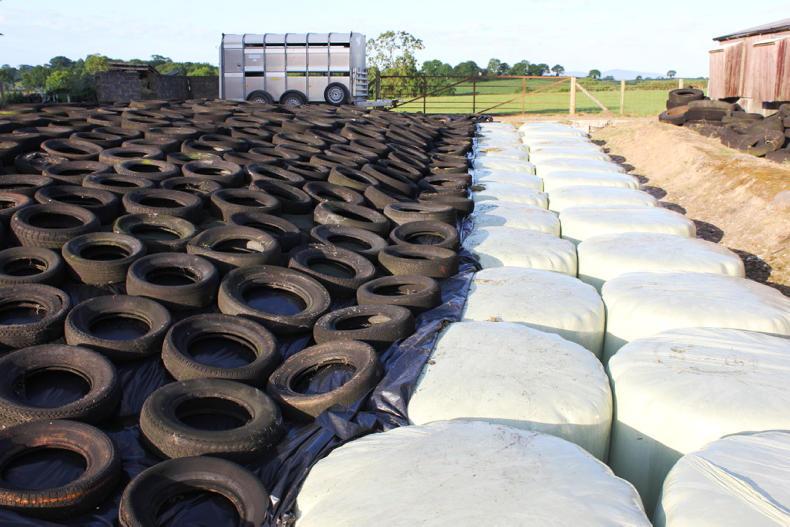To describe my silage-making season as disjointed would be something of an understatement, and a variety of fields were either baled or clamped over a seven-week stretch.
If you factor in differing weather conditions too, and stir in a huge range of sward types and composition, then results for silage analysis next winter may also be all over the place.
It began so well, with fantastic weather making an April start easily possible. This was followed up with a bit more baling during the first week in May, and thereafter things sort of slid downhill, to the extent that I was just glad to get the 12 acres of clamped material saved (mid-June) before quality disappeared altogether.
As always, the weather controlled the game, and wasn’t overly suitable just when I needed to mow the big half of my grass acreage. Against that, the swath turner (wuffler) proved invaluable once again, and really is my get-out-of-jail-free card when trying to make bales for sheep during showery weather. I’ve never seen any sort of trial work on these machines, but I’m pretty certain that running grass through a wuffler, even when showers are frequent, will considerably raise the dry matter. Certainly, a sward that is relatively dry on top but absolutely sodden underneath is better lifted and shaken out, than left with the bottom six inches lying saturated, even if it’s raining at the time.
Queue
One other issue raised its head (again) this year, and I’m sure there are a lot more farmers than me who will recognise this problem. What do you do when the weather is broken, your grass is ready for cutting and you are waiting in a long queue for the local contractor?
This is specifically a subject that applies to harvested grass going into a silo, since balers (at least in this part of the country) seem to be two-a-penny. And when one of these armies does manage to descend on your farm, all control of dry matter is out of your hands, as machinery that wouldn’t look out of place in a quarry vomits a 100t of grass per hour into your little silo.
That said, watching a loading shovel with a 15ft buckrake march a 16t load of grass up the clamp is nothing short of awesome.
And linked to this is another pertinent question. Are you better (during a delayed harvest) to have an old sward of sheep grass that grows horizontally and with a bottom as thick as tar, or a young sward of erect grasses, but that appear to be as hard as nails?
Correct growth stage
Obviously, the answer is to cut the grass at the correct growth stage, but in the big, bad real world, some of us find ourselves in these predicaments. I like to cling to the vague hope that, indeed, my field (having been grazed with sheep) has a lovely thick green bottom, and that it is much better than if it were a young sward, as hard as wire, with no bottom at all.
However, this may be a forlorn wish, and I’d love someone to tell me what’s best.
Unfortunately, there are only those with a vested interest in these matters, and getting a genuinely independent opinion is nigh on impossible.
My contractor has no such doubts, and subtly told me that my grass was the worst they had cut this year. But, then again, maybe he was judging it from the ease of mowing perspective, and perhaps wasn’t too interested in the science of making grass into silage. Who knows?






 This is a subscriber-only article
This is a subscriber-only article










SHARING OPTIONS: